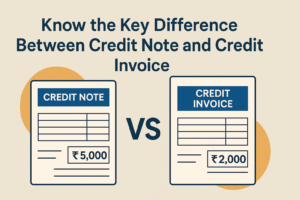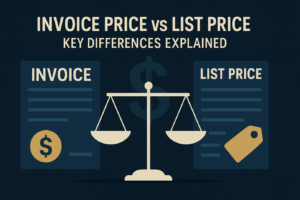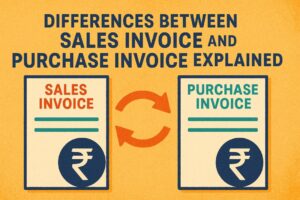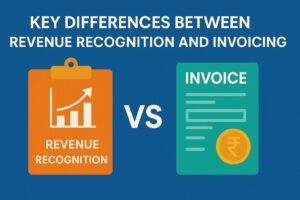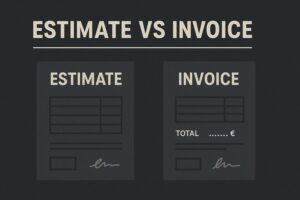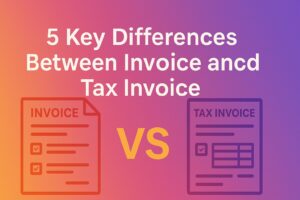Debit Note vs Invoice: Key Differences Explained
- 27 Nov 25
- 8 mins
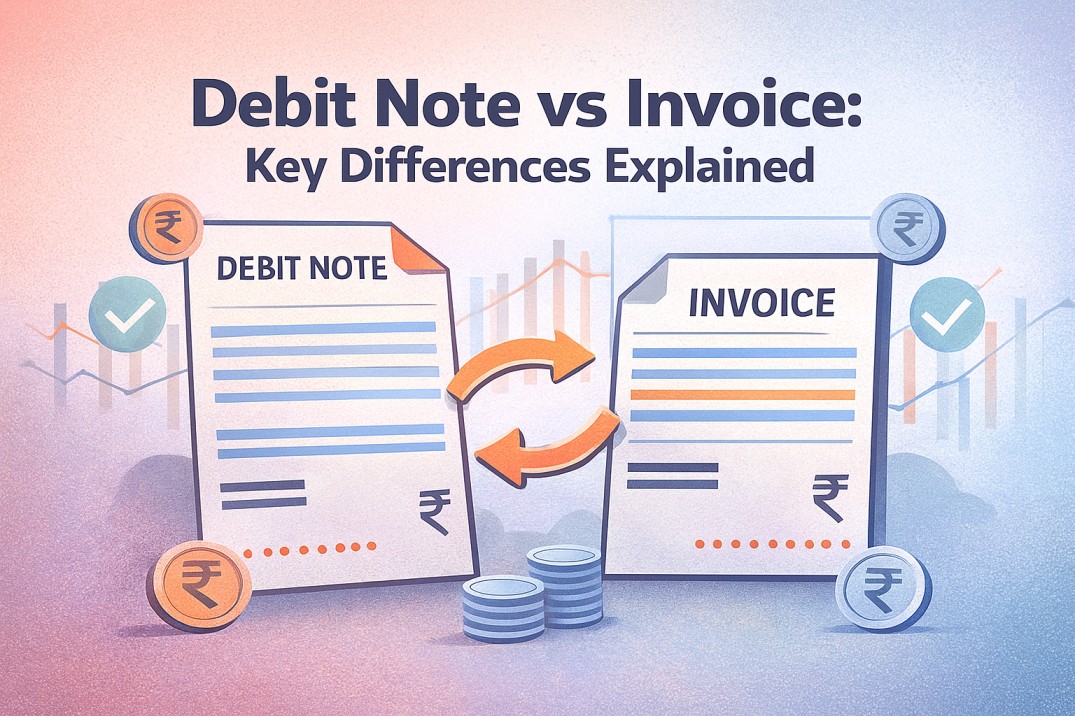
Debit Note vs Invoice: Key Differences Explained
Key Takeaways
- A debit note vs invoice comparison shows that invoices request payment, while debit notes correct underbilling errors.
- A debit note legally increases the original invoice amount, whereas an invoice initiates the billing process.
- Businesses use debit notes for price, quantity or tax corrections, highlighting the functional difference in debit note vs invoice usage.
- In debit note vs invoice, only invoices trigger payment movement, while debit notes adjust account balances.
- Understanding debit note vs invoice helps maintain accurate books and compliance with GST requirements.
Suppose a designer charges ₹50,000 for a project but by mistake sends an invoice for only ₹40,000. To collect the remaining ₹10,000, he sends a debit note. Meanwhile, the original ₹40,000 invoice was raised to request payment for the services he rendered.
While both documents are part of the billing process, a debit note is used for corrections, whereas an invoice initiates the payment request. In this blog, we will explore debit note vs invoice to help you understand how each supports business accounting.
Key Differences Between Debit Note vs Invoice
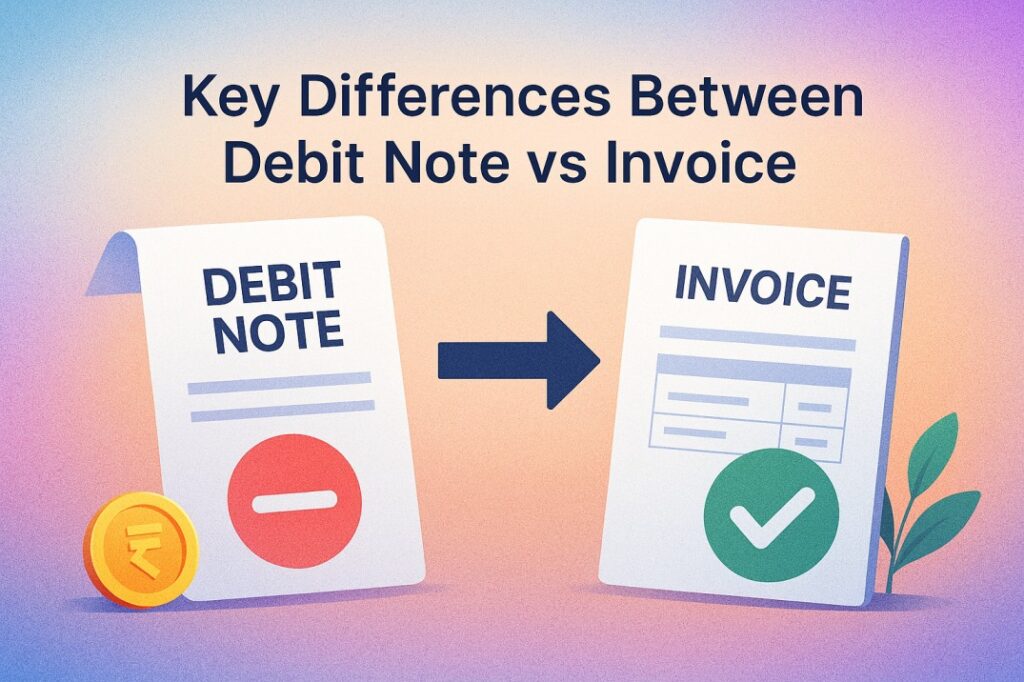
A debit note is not the same as an invoice. It serves to notify the buyer about an additional amount payable due to errors, returns or revisions. Take a look at the table below to understand the key differences between a debit note and an invoice.
| Features | Debit Note | Invoice |
| Meaning | A debit note is a document that a vendor issues to legally increase the value of a trade that was undervalued originally due to an error. | An invoice is a commercial document that a cashier of a business provides to the customer or client when they make a purchase. |
| Purpose | Vendors develop this document to keep formal records of accounting adjustments. It serves as evidence for adjustments. | The main purpose of invoices is to demand payment for a sale and maintain a legal record of it for future reference. |
| Money Movement | A debit note or debit memo does not stimulate money flow, as it is a document used to legalise and maintain adjustments in accounts. | An invoice stimulates money movement from buyers to vendors, as sellers issue them to demand money from buyers for making a sale. |
What Is a Debit Note?
A debit note is a supplementary document that acts as legal proof of adjustments made in the details of an original invoice. It helps in making changes to the accounting books of a business and matching the balance sheet.
The financial records of the right accounts help businesses to pay the right amount of tax liability and remain compliant with GST laws. Raising a debit note streamlines the process of calculating the right tax liability and frees people from taking any tedious offline steps.
What Is an Invoice?
An Invoice is a common document that a seller issues to a buyer demanding an amount of money. They do it when a buyer or a client purchases a product or service from them.
These invoices contain details including product-specific details, cost and payment-related details. If a customer buys goods on credit, then the invoice specifies the due date of payment, terms of the deal and available payment options, etc.
Moreover, there are various types of invoices, such as proforma invoice and sales invoice. All these invoices have a similar purpose of executing a sale transaction legally.
💡For your invoice generation needs, use the PICE App.
When Does a Vendor Issue a Debit Note?

Suppose you sold 32 bottles of ₹100 each to Mr. X. However, in the original invoice, you charged it as ₹90 each. Now as soon as you receive your remaining due amount of ₹320 [{₹100-90(32)}= ₹320], you would issue a debit note to correct the error.
Here are a few common scenarios where issuing a debit note becomes necessary:
- Undercharging the Customers
The most common reason for errors in invoices is calculation mistakes while placing the final amount in the invoice. Sometimes such errors can make you charge less than your deserved amount. In such cases, you request your remaining amount with the help of a debit note.
- Tax Related Errors
Sometimes, dealers might forget to add taxes as per tax regulations on their items and charge less tax on the original invoice. A lesser tax amount leads to an undervalued final amount and causes the sellers to issue a debit note for accounting corrections in the accounts receivable a/c.
- Charging for a Different Product
Shopkeepers generally have different models of an item with different prices. If a seller mistakenly charges for a lower price model than what was demanded, then that dealer has to issue a debit note to rectify the accounts after they receive their remaining money.
- Forgetting One or Two Items
In bulk purchases involving multiple goods or services, it is possible for certain items to be missed or overlooked during billing. Such omissions can lead to undervaluation in the invoice, prompting the seller to issue a debit note to correct the discrepancy in their accounts.
- Error in Quantity
Let’s say you delivered 50 pieces of an item, but the invoice mistakenly mentions only 40. In such a case, you will need to recover the payment for the remaining 10 pieces and issue a debit note for the correction.
- Foreign Currency Adjustments
International trade or export trades are influenced by the value of foreign currency. Now, the fluctuating currency value can cause errors in the final amount. In case of a depreciated value, a dealer must issue a debit note to the accounts team.
When Does a Vendor Issue Invoice?
An invoice is issued once the vendor has fulfilled the customer’s order, be it for goods, services or both. However, before issuing, it is a good practice to check if the customer is satisfied with the delivery. Once the invoice is shared, the buyer’s finance team records it under accounts payable and processes the payment.
Tips for Issuing a Debit Note
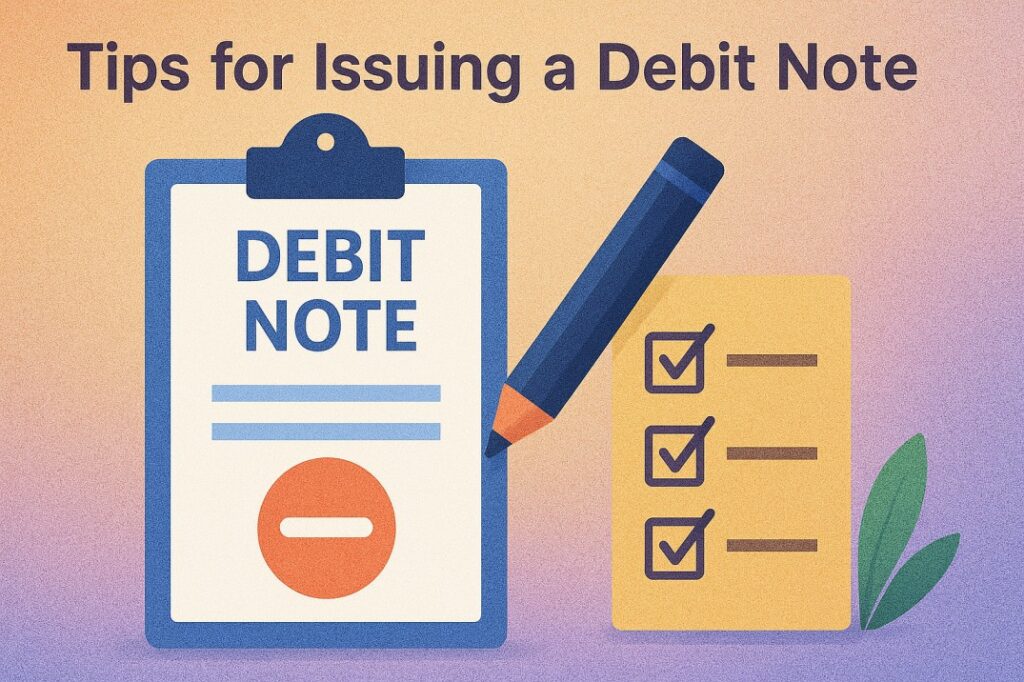
Issuing a debit note simply means legally informing the customer about a money inflow due to a change in the original invoice. To help you do it correctly, here are a few tips for issuing an accurate debit note:
- Double Check The Error: Mistakes can complicate the calculation process in a deal and increase the chances of further complications in accounts. Make sure your claim is right before making any changes.
- Enter the Right Details: Enter the right customer details and the amount you are going to receive from that specific customer.
- Issue Immediately: Issue your debit notes as soon as you find the error that causes the lowering of your original invoice value. This helps to reduce the chances of further accounting errors and faulty GST return filings.
- Use a Billing Software: To simplify the process of issuing debit notes, many businesses rely on billing software. These tools help generate debit and credit note formats and ensure compliance in every transaction.
Tips for Issuing an Invoice
Here are some useful tips to help you create invoices:
- Use E-Invoicing Software: If you are using e-invoicing software, it can speed up the entire invoice creation process, reduce manual errors and help you stay compliant with tax regulations.
- Issue Your Invoices on Time: If you are developing a written invoice, make sure you hand it over to your customer on time. This means ideally before the due date.
- Provide Payment Details: Make sure the payment details, including terms of payment and due date, are there in your invoice, especially if you are processing a credit sale.
Conclusion
While invoices initiate the payment process by stating the amount due for goods or services, debit notes help correct undercharges or errors made in the original invoice. Both documents play a key role in maintaining accurate business records.
Having a clear idea of the difference between a debit note vs invoice is important to streamline debt obligations and enhance your accounting documents.
 By
By 







